Here we have a rowing boat that combines traditional aesthetics, and adequate stability, with the high performance and full-body exercise offered by sliding-seat rowing rigs.
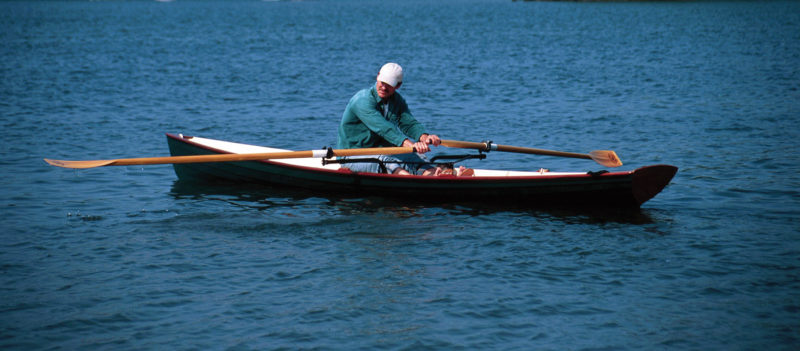 Photo by Chesapeake Light Craft
Photo by Chesapeake Light CraftRowing the sliding-seat wherry requires competent technique, which includes feathering the oars (rotating the grips so that the blades are nearly parallel to the water during “recovery.”)
On a cold day in November, two visitors arrived at the WoodenBoat waterfront. Chris Kulczycki, founder of Chesapeake Light Craft, and John Harris, current CEO and owner of the company, had come to show us their fast new pulling boat. They carried their sleek white Annapolis Wherry on racks atop a Nissan Pathfinder.
We launched the boat into the tail end of a passing cold front, which still had enough punch to kick up a sharp 15″ harbor chop. I climbed aboard, strapped my feet into the stretchers (foot braces) and, urged on by cold air and a brisk wind, began to pull hard. The 65-lb wherry accelerated quickly and cut easily through the steep waves. Despite its modest inertia, the light hull carried way with authority. We experienced little loss of speed during the recovery portion of the strokes as the oars’ blades skimmed the tops of the waves. Yes, we took some saltwater spray aboard…not really a bother when we’re rowing fast.
Stability seemed all we might expect from a boat of this purpose. The wherry is much steadier than a typical “recreational shell,” but this is no rock-solid flat-bottomed skiff. The slender (38″-wide) hull asks that we keep our weight carefully centered. Of course, that stable skiff on its best day could not keep pace with this wherry.
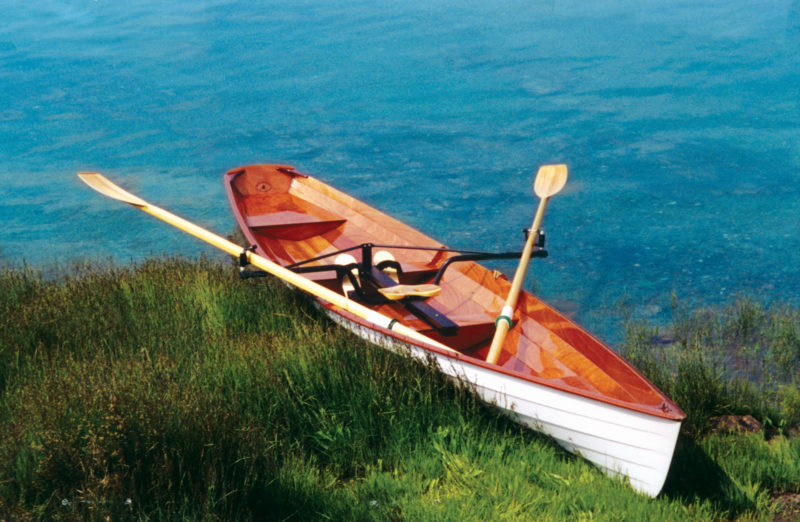 Photo by Chesapeake Light Craft
Photo by Chesapeake Light CraftFaster than a typical skiff, yet more stable than a recreational shell, the light (65 lbs) Annapolis Wherry from Chesapeake Light Craft offers healthy exercise and satisfying speed.
As this old oarsman supplied the propulsion for the wherry, a Piantedosi Row-Wing acted as the transmission. That wonderfully elegant “sliding seat” unit simply drops into the bilge, and off we go. The monorail rig works perfectly. There’s no slack or unwanted flexibility in its mechanicals; but, if we are dissatisfied with perfection, there are other options.
We can row this wherry from a fixed thwart. The oarlocks can be mounted on the gunwales or on short outriggers. Let’s raise the locks an inch or two so that the oars’ grips will clear our thighs during recovery. Those of us with stiff necks, who still like to see where we’re headed, might consider the forward-facing rigs available from Ron Rantilla Rowing Systems, 30 Cutler St. #207, Warren, RI 02885. These clever devices can be operated using just our arms, or just our legs, or we can employ all of our appendages. Our seats remain fixed in the boat, and we can see the path ahead without looking over our shoulders. Oarsmen who prefer to remain seated backward might simply affix a “Third Eye” cyclist’s mirror to their caps or sunglasses.
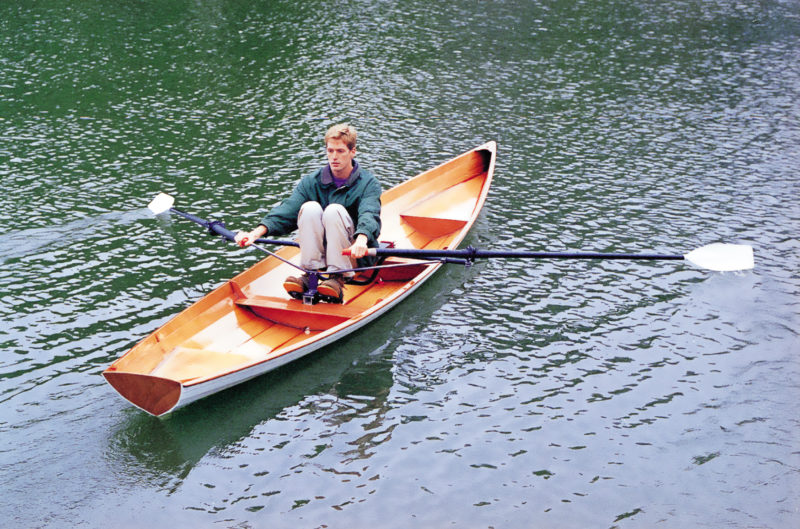 Photo by Chesapeake Light Craft
Photo by Chesapeake Light CraftSliding-seat rowing provides rigorous but smooth full-body exercise…gentle on our joints.
As the wherry’s appearance suggests, this is a glued lapstrake structure…but we’ll find a difference in assembly, a big difference. When creating conventional lapstrake hulls, experienced builders bevel the edges of the lapped planks to ensure a tight and even fit that gives strength and keeps out most of the water. The Annapolis Wherry goes together LapStitch fashion. This technique, developed by CLC, employs a CNC machine to cut the planks to shape and to work a constant 90-degree rabbet into the inside lower edge of each plank. Aren’t computers grand?
To assemble the hull, we’ll place the square edge of a plank into its neighbor’s rabbet and join everything with twisted wire ties (as in common stitch-and-glue construction). Then, using a plastic syringe containing epoxy filled with silica, we’ll fill the voids at each lap…no tricky compound bevels needed. Because the hull rests upside down while we work, gravity will be our reliable assistant. That great force of nature will cause the epoxy slurry to flow into all gaps.
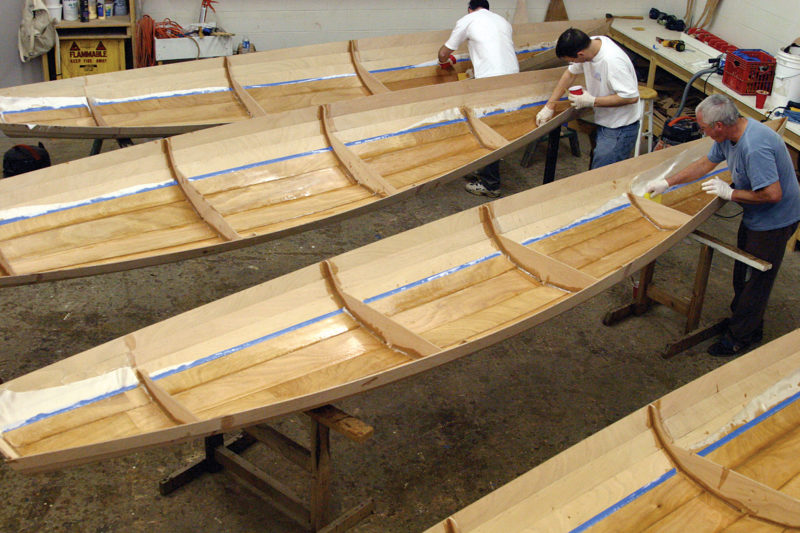 Photo by Chesapeake Light Craft
Photo by Chesapeake Light CraftLapStitch construction produces clean interiors with few frames.
These LapStitch hulls go together quickly. Compared to ordinary stitch-and-glue construction, we’ll need to do less sanding and grinding to achieve a smooth and fair surface. As with all lapstrake boats, the shadow lines cast at the laps accentuate sweet hull lines.
Fast and easily driven, the Annapolis Wherry makes a fine exercise machine for serious and casual athletes. In calm water, with the rowing position moved forward, this slender boat becomes the perfect vehicle for a romantic afternoon. Can there be a better way in which to court a young lady? Conversation falls into the rhythm of each stroke as the miles flow by. Good times.
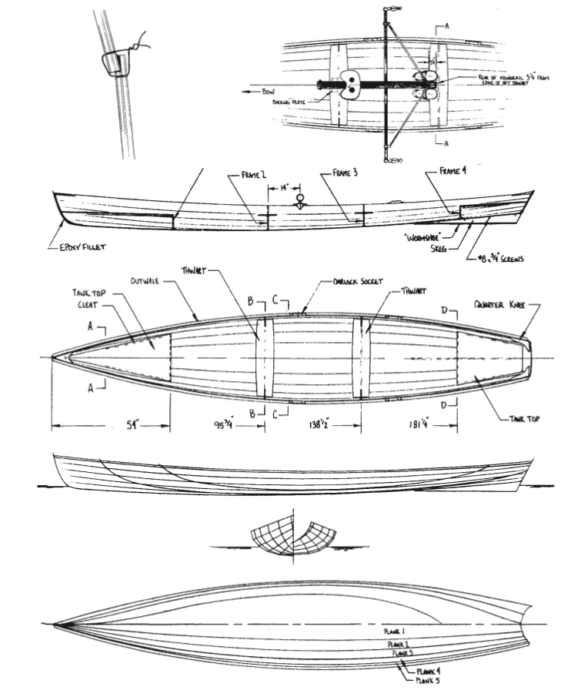
The Wherry goes together LapStitch fashion. Rather than requiring the usual rolling bevels at the laps, this CLC technique employs right angle rabbets filled with epoxy (top, left). A Piantedosi Row-Wing sliding-seat (top) transmits the oarsman’s power to the hull and produces good speed. If ultimate simplicity is the target, we can build the wherry for fixed-seat rowing (middle). Easy hull lines (bottom) allow for quick building and fast rowing.
Plans for the Annapolis Wherry are available from Chesapeake Light Craft.
Is there a boat you’d like to know more about? Have you built one that you think other Small Boats Magazine readers would enjoy? Please email us!
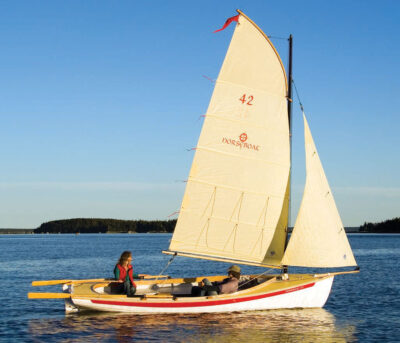
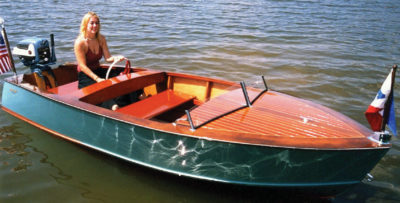
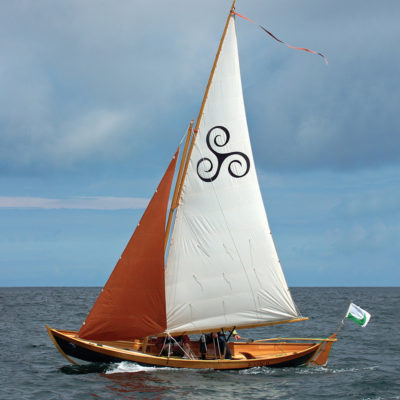
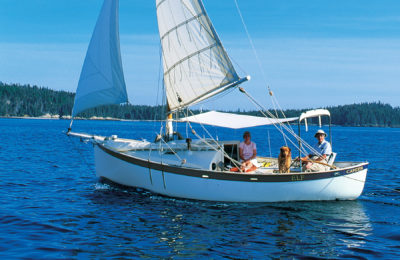
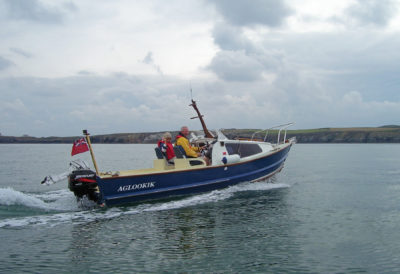
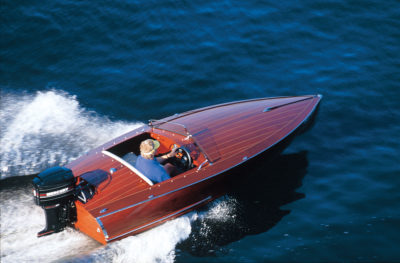
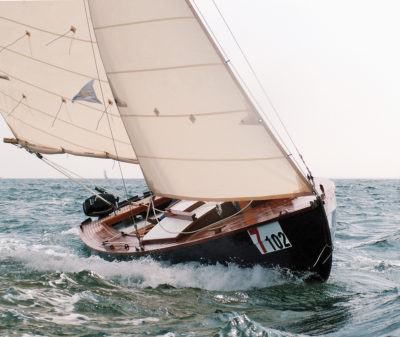
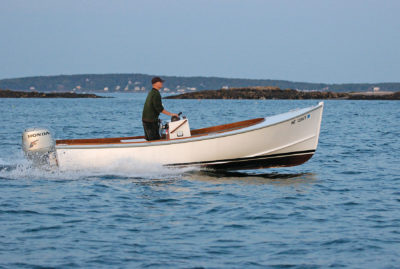
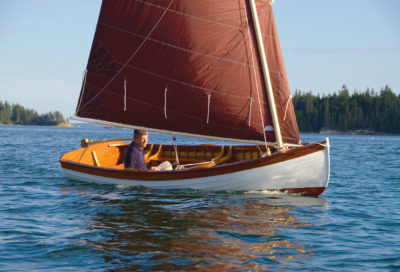
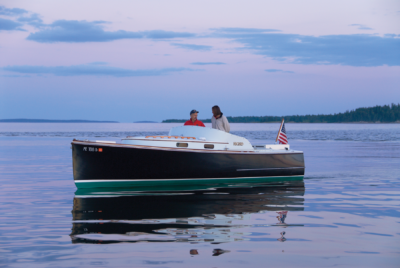
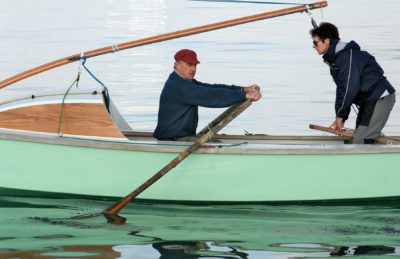
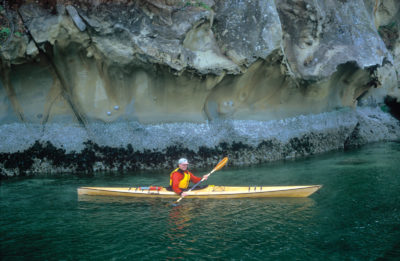
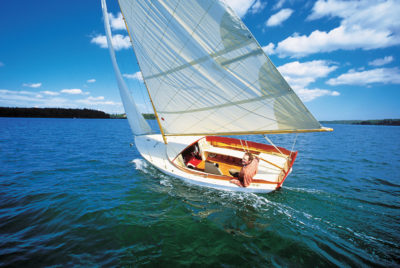
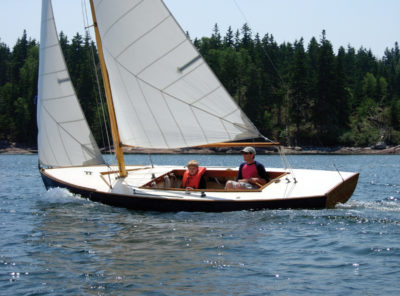
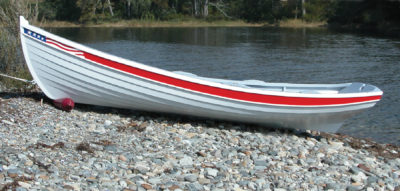
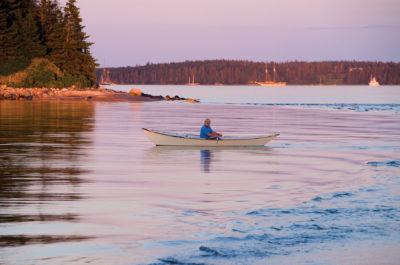
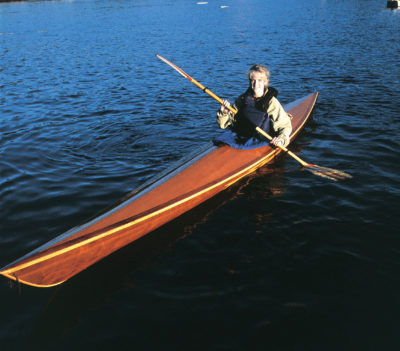
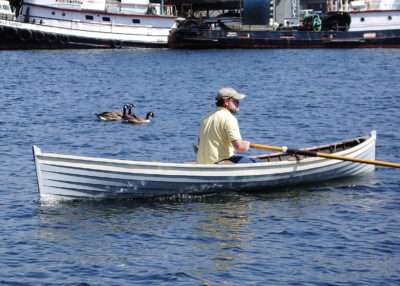
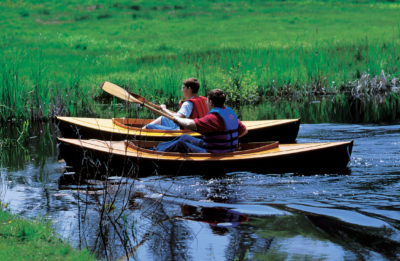
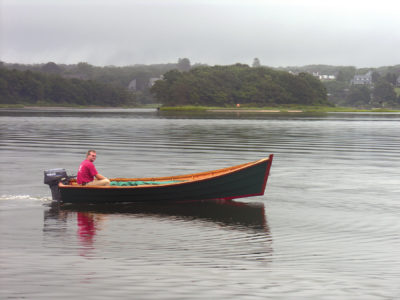
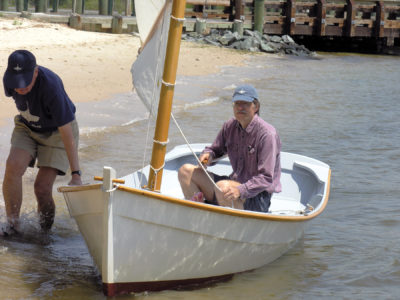
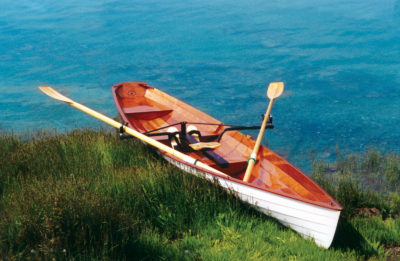
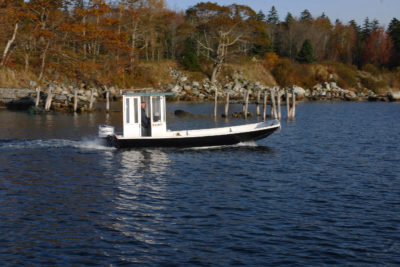
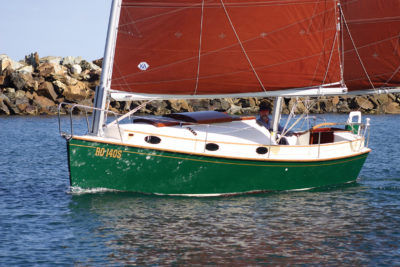
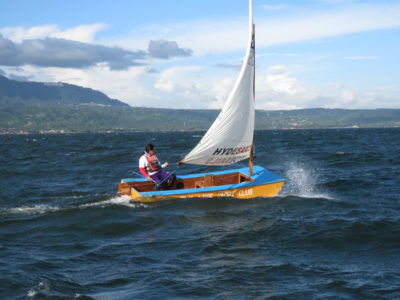
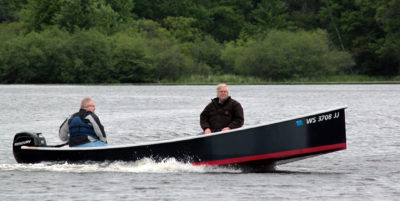
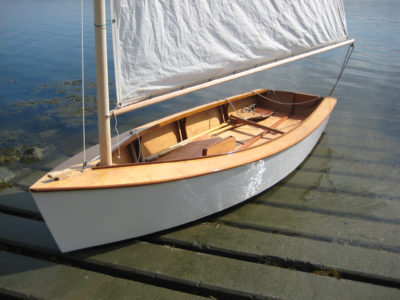
Considered the AW but due to the CDN$ and COVID’s cross-border logistics challenges, I chose an 18’ Expedition Rowboat and sliding seat from Angus Rowboats. The boat is fast, stable and can carry a prodigious quantity of gear. However, I did order a set of Dreher oars from CLC because even with the exchange and customs duties it was the best deal around. Now to find an Annapolis Wherry to see which boat is faster.
You have found one if you can bring your CDN to Deer Isle, Maine. This summer! The two pictures of the wherry in the in sea grass are of the boat I built almost 20 yrs ago! I’ve built two more since! There’s no wherry that’s faster!
I enjoy Small Boats Magazine as well !